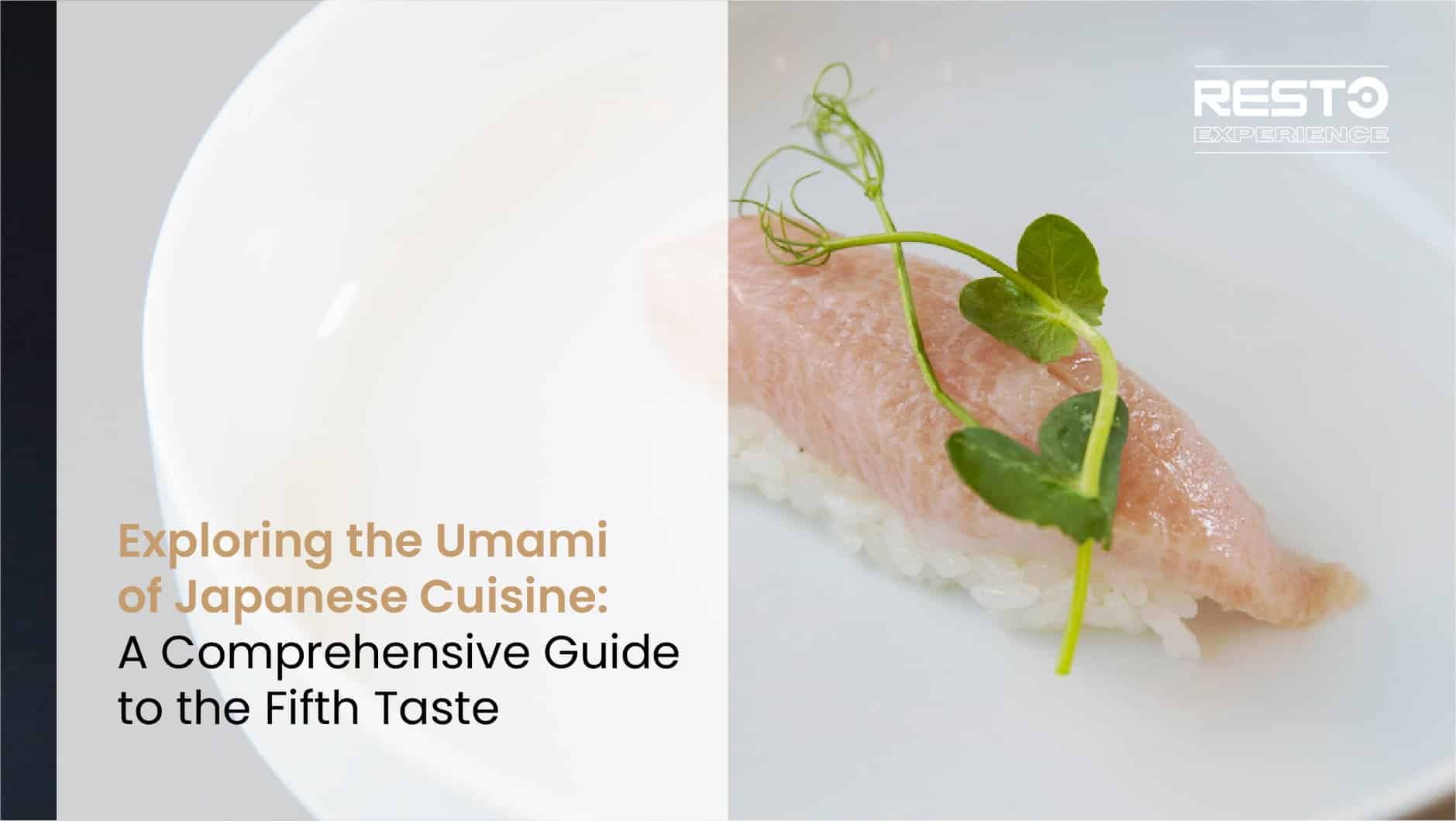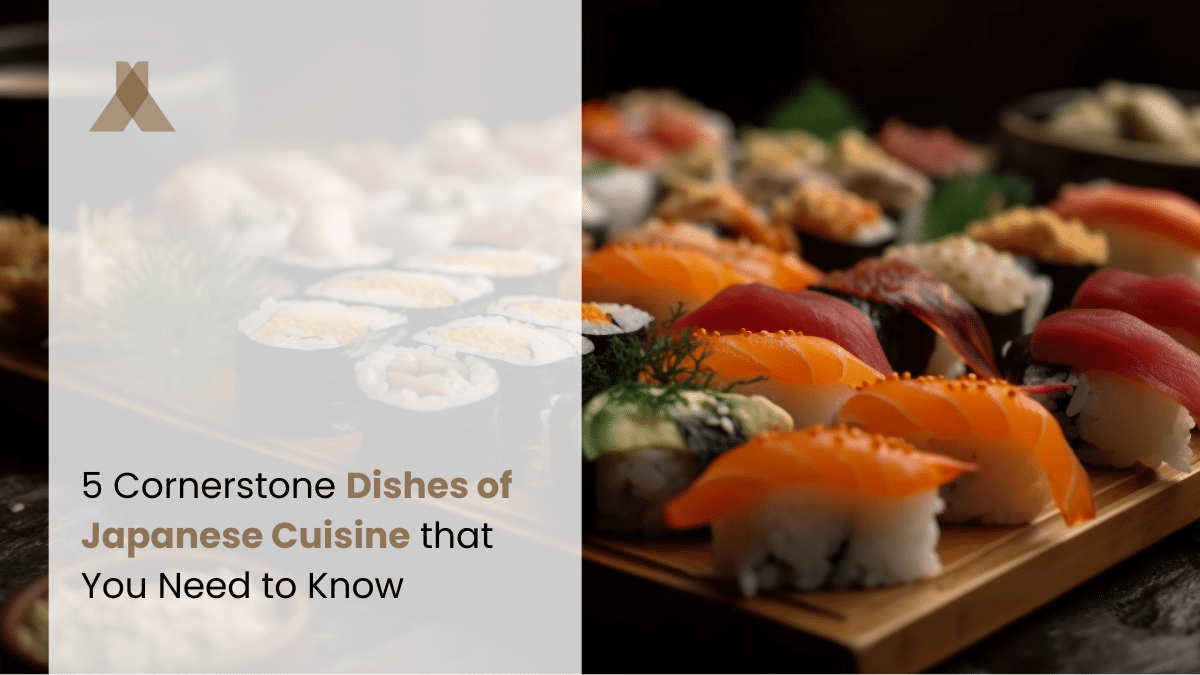Umami: it’s the savory, mouth-watering flavor that keeps us coming back for more. And when it comes to umami, there’s no cuisine quite like Japanese cuisine.
From the rich, salty flavor of miso soup to the bold, meaty taste of curry, Japanese dishes are renowned for their unique and irresistible taste.
But what exactly is umami, and how does it work its magic on our taste buds? In this comprehensive guide, we’ll explore the science behind umami and delve into the essential ingredients used to maximize its flavor in Japanese cuisine.
So sit back, grab your chopsticks, and get ready to discover the delicious world of the fifth taste.
What is Umami and How Does It Impact Our Palate?
Umami is often referred to as the fifth taste, alongside sweet, salty, sour, and bitter. It is a savory flavor that is commonly found in Japanese cuisine, specifically in ingredients such as seaweed, shiitake mushrooms, soy sauce, and miso.
The term “umami” comes from the Japanese words “umai” meaning delicious, and “mi” meaning taste, and was first identified by a Japanese scientist named Kikunae Ikeda in the early 20th century.
This fifth taste is perceived on the palate as a pleasant, savory taste that enhances the flavors of other ingredients. It is said to be the taste of glutamate, an amino acid found naturally in many foods, and is also commonly associated with other amino acids such as inosinate and guanylate.
Umami adds depth and complexity to dishes, making them more satisfying and enjoyable to eat. Its impact on our palate can be described as a sensation that spreads throughout the mouth and enhances the overall flavor experience.

Exploring the Science Behind Umami and Its Role in Japanese Cooking
The science behind umami lies in the activation of glutamate receptors in our taste buds, which triggers a specific sensory response on our palate. Umami food sources include not only the traditional Japanese ingredients such as seaweed and miso, but also a variety of other foods such as tomatoes, Parmesan cheese, and beef.
By using this ingredients in cooking, chefs can enhance the flavor profile of their dishes and create a more satisfying taste experience for diners.
To enhance umami flavor in cooking, chefs can use a variety of techniques such as slow-cooking, fermenting, and aging. These methods break down proteins in food, releasing more glutamate and other amino acids, and thus increasing the overall the fifth taste.
Additionally, pairing rich ingredients together can also create a synergistic effect, enhancing the flavor even further. Understanding the science behind umami and its role in Japanese cooking allows chefs to create more complex and satisfying dishes that leave a lasting impression on diners.
Taste-Testing Different Types of Japanese Dishes that Feature this Flavor
Japanese cuisine boasts an array of authentic dishes that feature the rich flavor, making it one of the top culinary destinations for foodies.
From sushi to miso soup, there is no shortage of authentic Japanese dishes with this flavor. The best recipes for umami dishes include popular dishes such as okonomiyaki, a savory pancake filled with cabbage and seafood, and katsu curry, a breaded and fried chicken cutlet served with a rich curry sauce.
Other top Japanese foods with umami include ingredients such as dashi and umeboshi. These ingredients are essential for creating authentic Japanese dishes with umami flavor.
Exploring the different types of authentic Japanese dishes with umami flavor is a must for any food enthusiast.
The Essential Ingredients Used to Maximize Umami Taste in Japanese Dishes
When it comes to maximizing the taste in Japanese dishes, there are several essential ingredients that chefs rely on. Shoyu sauce, a type of soy sauce made from soybeans and wheat, is a staple in many Japanese dishes and is prized for its rich umami flavor.
Similarly, miso paste, a fermented soybean paste, is a key ingredient in many soups and stews and adds a savory, salty flavor to dishes.
Another essential ingredient for maximizing umami taste in Japanese dishes is dashi broth base. Made from kombu seaweed and bonito flakes, dashi is a flavorful broth that is used as a base for many soups, sauces, and marinades.
Lastly, mirin sweet rice wine is a versatile ingredient that is used to add sweetness and depth to dishes, while also enhancing umami flavors. By using these essential ingredients, chefs can create authentic Japanese dishes that are bursting with umami taste and flavor.
The Health Benefits of Eating Foods Rich in the fifth taste
In addition to its rich taste, umami has been linked to several health benefits.
Foods rich in umami flavor are often high in protein and other essential nutrients, making them a healthy choice for those looking to improve their overall diet.
Additionally, this flavor has been shown to enhance satiety, which can help to prevent overeating and promote weight loss.
Furthermore, research has suggested that some of the key ingredients used to enhance umami flavor, such as miso paste and dashi broth base, may have additional health benefits.
For example, miso paste contains probiotics that can help to improve gut health, while dashi broth base is high in antioxidants that can help to protect against inflammation and oxidative stress.
By incorporating more umami-rich foods into their diet, individuals can not only enjoy the delicious taste of Japanese cuisine, but also reap the many health benefits associated with this unique fifth taste.





